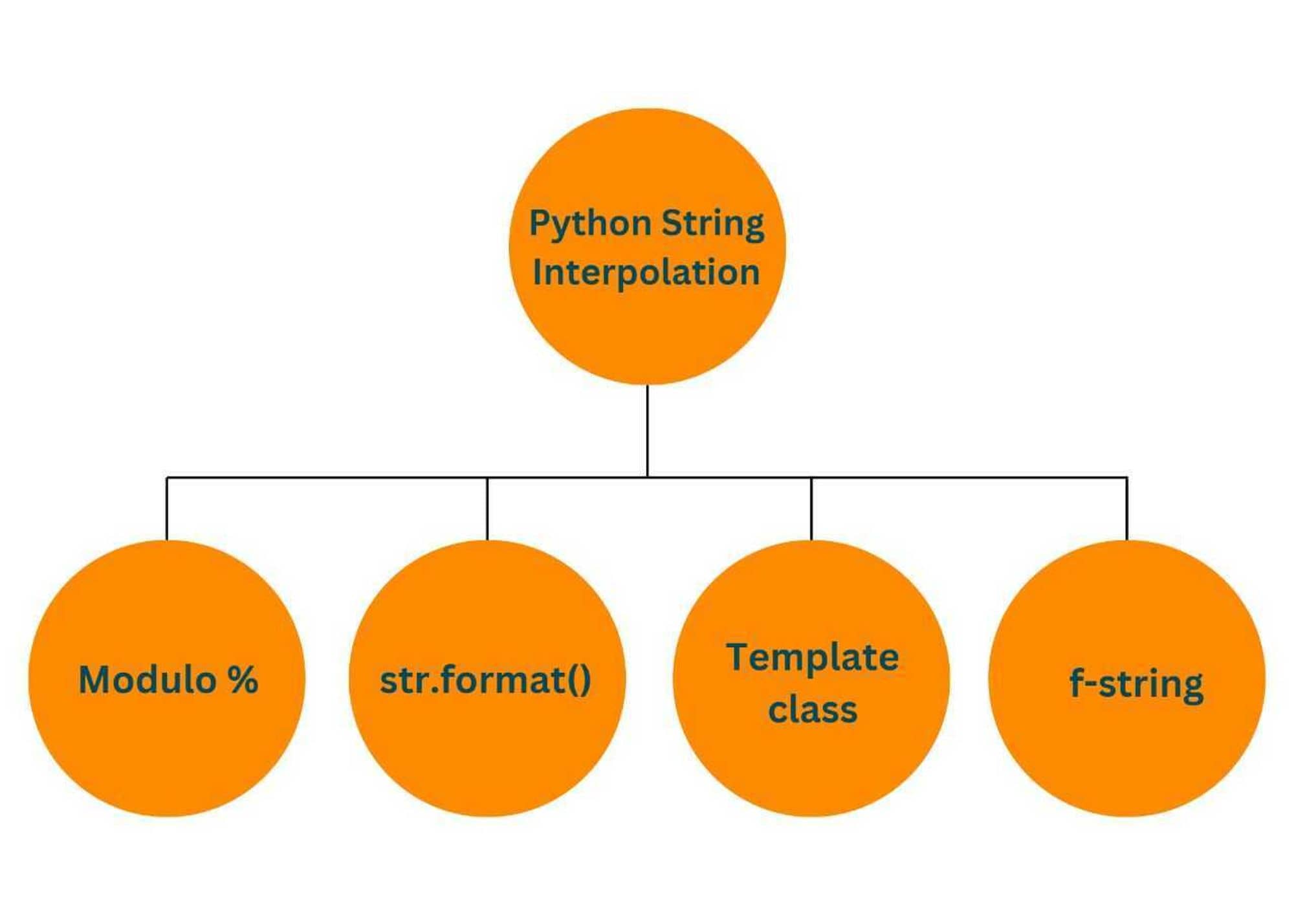String interpolation is a powerful feature in Python that allows for the dynamic insertion of variables into strings. It enhances code readability, simplifies string formatting, and provides flexibility in generating output. Python offers multiple methods for string interpolation, including the % operator, the str.format() method, f-strings, and template strings. Each method has its own syntax and use cases, but all serve the purpose of achieving efficient and effective string interpolation. We will see the 4 different ways to achieve this in python and with examples also understand how each way works.
What is String Interpolation in Python?
In Python, String Interpolation means placing a placeholder inside a string that can be dynamically changed based on some variable’s value. It is used often when the elements inside a string are not known or could be changing from time to time. It enables the creation of more readable and efficient code by avoiding the need for manual string concatenation or formatting. With string interpolation, variables can be directly embedded within a string, eliminating the need for complex concatenation operations.
Importance of String Interpolation
String interpolation plays a crucial role in Python programming as it enhances code readability, simplifies string manipulation, and improves overall efficiency. By using string interpolation, developers can easily incorporate variables, calculations, and expressions into their strings, resulting in cleaner and more concise code. This feature is especially useful when dealing with dynamic content, such as generating personalized messages or constructing complex queries.
You can check out this article to learn more string formatting techniques: Python String Formatting.
Methods of String Interpolation
There are various methods of implementing string interpolation that we shall discuss below:

1. The % Operator Method
The % formatting in python is perhaps the most naive way of performing string interpolation in python. We simply place, the % sign wherever we expect to put a placeholder and then provide the values of the placeholder after the string
To use the % operator for string interpolation, the following syntax is used:
string % values
Let's understand it with an example:
user = "Abrar" age = "20" print("Hello %s. Your age is %s "%(user,age))
Output:
Hello Abrar. Your age is 20
There are some special types of % signs that we can use when we want to let the compiler know what intended value we want to provide in the placeholder. For example, if we want the placeholder to only be replaced by integer values we use the symbol %d.
Similarly, various other symbols can be used for various reasons, some of which are the following:
- %s: when we want the placeholder value to be a string
- %f: when we want the placeholder value to be a floating point decimal like 2.415
- %r: when we want to replace the placeholder with the raw data of a variable
- %x: when the value replacing the placeholder has to be a hexadecimal value
- %o: when the value replacing the placeholder has to be an octal value
- %c: when we want to replace the placeholder with special characters
2. The str.format Method
The str.format() method is a more versatile and preferred way of performing string interpolation in Python. It provides a more readable syntax and allows for greater control over the formatting of the resulting string. Using this method, instead of providing a % sign as a placeholder, we define the placeholder using curly braces { }. The values that we want to replace in the placeholder are passed as arguments to the format function.
To use the str.format() method for string interpolation, the following syntax is used:
string.format(values)
An example depicting this is provided below:
user = "Abrar" age = "20" print("Hello {}. Your age is {} ".format(user,age))
Output:
Hello Abrar. Your age is 20
We can also provide names to our placeholders for easier readability in our programs. Obviously with too many interpolations to make, we would lose track of which curly brace is getting replaced with what values.
Therefore to name the placeholders, we just provide a name inside the curly brace that we then use while passing the values of the placeholders in the format function.
user = "Abrar" age = "20" print("Hello {name}. Your age is {age} ".format(name=user,age=age))
Output:
Hello Abrar. Your age is 20
3. Template
A template is a class inside the string module. A class is a bunch of variables and their associated functions that can be accessed by a single name and a module is a bunch of these classes. How do we do string interpolation using the template class?
The template class allows us to create templates with placeholders in them that we can later use to substitute the placeholder values. You can create a template by using the $ sign as a placeholder and then use the substitute function inside the template class to replace it with placeholder values.
You can have a look at the example below to understand this concept in a better fashion.
from string import Template welcome = Template("Hello $name. Your age is $age") user = "Abrar" age = "20" print(welcome.substitute(name=user,age=age))
Output:
Hello Abrar. Your age is 20
4. F-strings (Formatted String Literals)
F strings are perhaps the easiest way of performing string interpolation in python. f strings were introduced after python 3.6 and life has become easier since then. Why do we call it f string? Well, any string on which you want to perform string interpolation using this method has to begin with the letter f before the quotes. F-strings are prefixed with the letter 'f' or 'F' and allow for the direct insertion of variables, expressions, and even function calls within curly braces {}. This eliminates the need for explicit string concatenation or format specifiers.
So if you were to use an f string for wishing hello to every new user, you would write f” Hello ”. But what makes f strings so easy to use? Unlike the other three methods that we saw, you do not have to define the placeholder and their values separately.
You read it right! Using f strings you can directly interpolate values into the string by providing the values in curly brace inside the string.
To use f-strings for string interpolation, the following syntax is used:
f"string literal {expression}"
Have a look at the example below and it will become crystal clear to you.
user = "Abrar" age = "20" print(f"Hello {user}. Your age is {age}")
Output:
Hello Abrar. Your age is 20
String Interpolation vs. Concatenation
String interpolation and string concatenation are both methods used to combine strings and variables. However, they differ in terms of readability, efficiency, and flexibility.
String interpolation, using methods like f-strings or the % operator, offers a more concise and readable syntax for combining strings and variables. It allows for the direct insertion of variables into strings, eliminating the need for explicit concatenation operations.
On the other hand, string concatenation involves the use of the '+' operator to combine strings and variables. While it is a straightforward method, it can become cumbersome and less readable, especially when dealing with multiple variables or complex formatting requirements.
Benefits of String Interpolation
String interpolation offers several benefits over string concatenation:
- Readability: Interpolated strings are more readable and concise, as the variables are directly inserted into the string.
- Flexibility: Interpolation methods allow for complex expressions, arithmetic operations, and function calls within the string.
- Formatting: Interpolation methods provide format specifiers to control the formatting of interpolated values, such as precision or number formatting.
- Efficiency: Interpolation methods are generally more efficient than concatenation, as they avoid unnecessary string object creation.
Conclusion
String interpolation in Python is a frequent task that requires us to dynamically change the value of a string. It can be achieved in four manners based on the programmers' needs. Strings can be interpolated using the % sign, the format function, the Template class, or using f strings. The % sign is not preferred as it decreases the readability of the program whereas the f strings method is the most preferred as it is easier and increases code readability.








